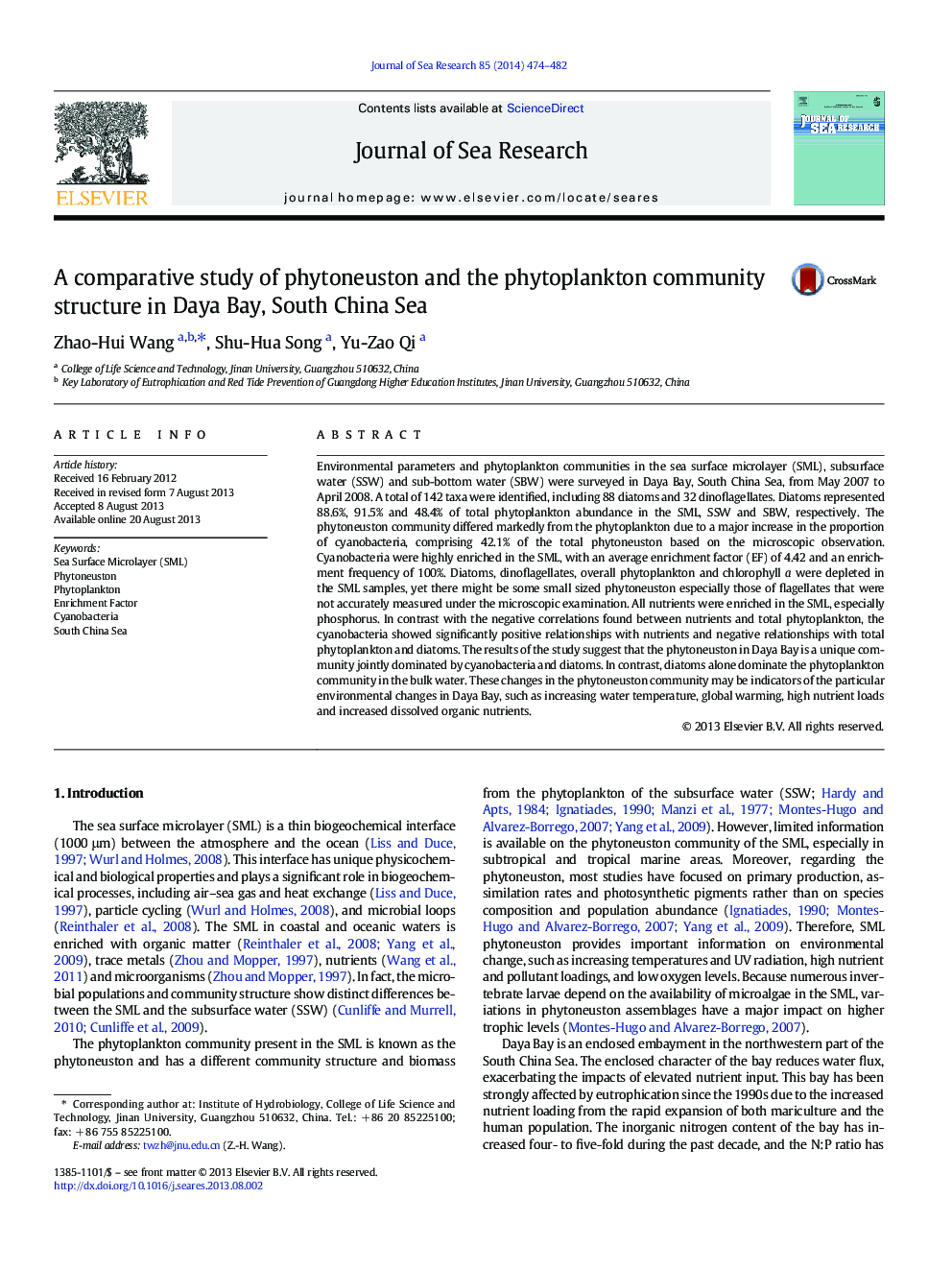| کد مقاله | کد نشریه | سال انتشار | مقاله انگلیسی | نسخه تمام متن |
|---|---|---|---|---|
| 6387444 | 1627489 | 2014 | 9 صفحه PDF | دانلود رایگان |

- Phytoplankton and phytoneuston were studied in Daya Bay of the South China Sea.
- A remarkable increase in cyanobacteria occurred in the phytoneuston community.
- Other phytoplankton groups and chl a were depleted in the SML.
- The particular nutrient niche provided abundant cyanobacteria in the SML.
Environmental parameters and phytoplankton communities in the sea surface microlayer (SML), subsurface water (SSW) and sub-bottom water (SBW) were surveyed in Daya Bay, South China Sea, from May 2007 to April 2008. A total of 142 taxa were identified, including 88 diatoms and 32 dinoflagellates. Diatoms represented 88.6%, 91.5% and 48.4% of total phytoplankton abundance in the SML, SSW and SBW, respectively. The phytoneuston community differed markedly from the phytoplankton due to a major increase in the proportion of cyanobacteria, comprising 42.1% of the total phytoneuston based on the microscopic observation. Cyanobacteria were highly enriched in the SML, with an average enrichment factor (EF) of 4.42 and an enrichment frequency of 100%. Diatoms, dinoflagellates, overall phytoplankton and chlorophyll a were depleted in the SML samples, yet there might be some small sized phytoneuston especially those of flagellates that were not accurately measured under the microscopic examination. All nutrients were enriched in the SML, especially phosphorus. In contrast with the negative correlations found between nutrients and total phytoplankton, the cyanobacteria showed significantly positive relationships with nutrients and negative relationships with total phytoplankton and diatoms. The results of the study suggest that the phytoneuston in Daya Bay is a unique community jointly dominated by cyanobacteria and diatoms. In contrast, diatoms alone dominate the phytoplankton community in the bulk water. These changes in the phytoneuston community may be indicators of the particular environmental changes in Daya Bay, such as increasing water temperature, global warming, high nutrient loads and increased dissolved organic nutrients.
Journal: Journal of Sea Research - Volume 85, January 2014, Pages 474-482